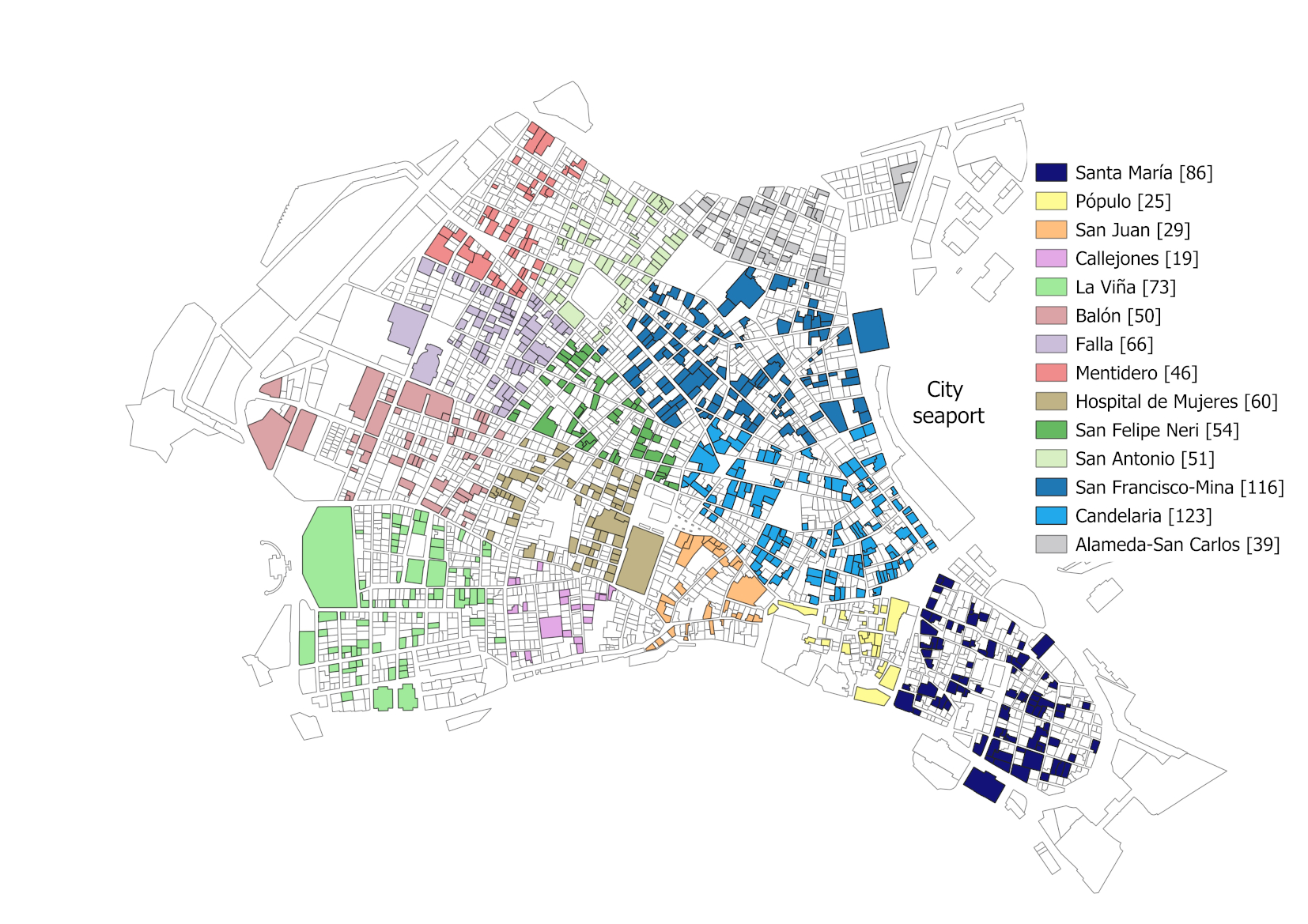
Geo-visualisation applied to archival heritage: a transversal interpretation of historical architectural projects
Abstract
The Historical Municipal Archive of Cadiz preserves a significant collection of documents that has been created by the Town Hall since 1596, the year in which the city was sacked by Anglo-Dutch troops and all previous documents were lost. The collection includes a series of plans and façade elevations of the various architectural interventions carried out on the city’s buildings in the 18th, 19th, and 20th centuries. Currently, the archive lacks a flexible and systema8sed digital tool that would enable swift access to this very interesting graphic documentation.
Subsequent to having first corrected the errors in the catalogue and having selected the relevant information to be highlighted, the research carried out focuses on the analysis of all the surviving graphic documents and the creation of a digital database. With the help of this new database, all the preserved plans are inserted into a digital urban cartography and georeferenced with the highlighted information in a GIS tool. In this way, accessibility to the informa8on and consultation of the collec8on has been improved.
Lastly, the GIS tool has enabled us to carry out various quan8ta8ve analyses with spa8al georeferencing of the architectural projects received in several categories, including those of architects, periods of execu8on, type of architectural intervention, buildings with the highest number of in- terven8ons, and neighbourhoods with the most projects. These analyses shed light on the evolution and architectural development of the city in the period under study.
DOI: https://doi.org/10.20365/disegnarecon.34.2025.7
Keywords
Full Text:
PDFRefbacks
- There are currently no refbacks.
Copyright (c) 2025 Gabriel Granado Castro, Joaquín Aguilar Camacho
DISEGNARECON
ISSN 1828 5961
Registration at L'Aquila Law Court no 3/15 on 29th June, 2015.
Indexed in SCOPUS. Diamond Open Access. All papers are subjected to double blind peer review process by qualified reviewers.
Journal founded by Roberto Mingucci
